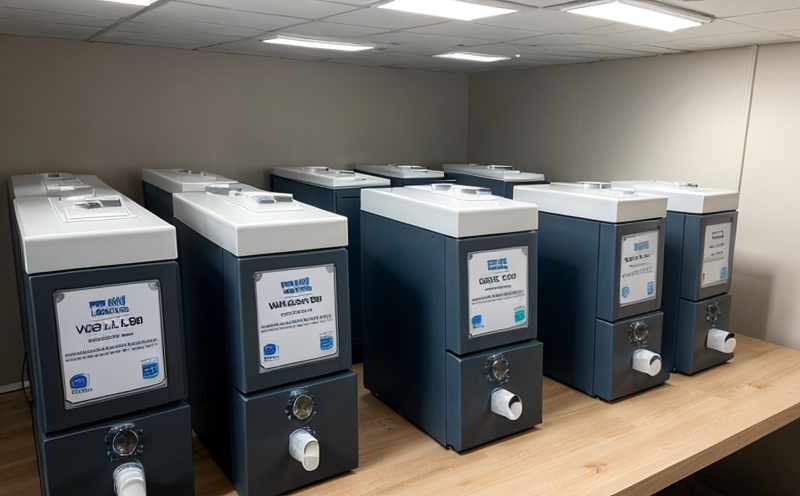Assessment of aldehyde release from coated fabrics
The assessment of aldehyde release from coated fabrics is a critical process in ensuring product safety and compliance with international standards. This testing service targets formaldehyde, which can be released as a result of the chemical composition of these fabrics. The presence of formaldehyde in textiles can lead to adverse health effects, including skin irritation, respiratory issues, and allergic reactions.
Formaldehyde is commonly used in textile finishing processes such as printing, dyeing, and coating to improve fabric properties like softness, crease resistance, and durability. However, the release of formaldehyde from these fabrics can pose significant risks if not properly controlled. This service focuses on ensuring that the levels of aldehyde released into the air are within acceptable limits set by various international standards.
The testing process involves several key steps: specimen preparation, sampling, analysis using advanced instrumental techniques, and interpretation of results in accordance with relevant standards such as ISO 14175:2003. Specimens are carefully prepared to simulate real-world conditions under which the fabric may be used. This includes consideration of environmental factors like temperature, humidity, and exposure time.
Sampling is performed according to standard procedures to ensure accurate representation of the actual release rates. Once samples have been collected, they undergo rigorous analysis using state-of-the-art instrumental methods like gas chromatography or infrared spectroscopy. These techniques allow for precise measurement of formaldehyde concentrations in the air surrounding the specimen during exposure.
Results are then compared against specified limits outlined in relevant standards to determine whether the fabric meets required safety specifications. Compliance with these standards is essential not only for protecting consumer health but also for ensuring that products meet regulatory requirements imposed by governments around the world.
The importance of this testing cannot be overstated, especially given increasing concerns over environmental sustainability and human health. By providing accurate data on aldehyde release rates, our laboratory helps manufacturers make informed decisions about their production processes while maintaining high standards of quality control.
| Standard | Description |
|---|---|
| ISO 14175:2003 | Specification for the determination of formaldehyde released from textile materials and products by drying and curing. |
In summary, our comprehensive approach to assessing aldehyde release from coated fabrics ensures that manufacturers can confidently produce safe, high-quality textiles that meet both regulatory requirements and market expectations. This service is particularly valuable for those involved in quality management, compliance officers, R&D engineers, and procurement professionals who need reliable data on the safety of their products.
Eurolab Advantages
We at Eurolab pride ourselves on offering unparalleled expertise in textile testing services. Our state-of-the-art facilities equipped with cutting-edge technology ensure accurate and consistent results every time. With years of experience under our belt, we have established a reputation for excellence that speaks volumes about the quality of our work.
- Comprehensive range of tests covering all aspects of textile performance and safety
- Strict adherence to international standards ensuring reliable and repeatable outcomes
- Fast turnaround times allowing clients to receive results quickly without compromising accuracy or depth
- Trained and certified personnel who stay updated on the latest developments in the field
In addition, Eurolab offers tailored solutions designed specifically for our customers' unique needs. Whether you require basic compliance checks or complex multi-parameter evaluations, we have the resources to meet your requirements effectively.
Competitive Advantage and Market Impact
- Our advanced analytical techniques provide more precise measurements than traditional methods used by competitors
- Speedy delivery times enable faster decision-making processes for clients
- The ability to offer customized testing packages caters directly to specific client needs, setting us apart from generic offerings available elsewhere
- Our commitment to staying current on industry trends ensures that we remain ahead of the curve when it comes to developing new methodologies and interpretations.
These competitive advantages translate into significant market impacts. Companies benefitting from our services gain a strategic edge over their competitors by being able to produce safer, more reliable products faster than others. This translates directly into improved customer satisfaction, increased sales volume, and enhanced brand reputation.
Use Cases and Application Examples
- Manufacturers of home textiles such as curtains, bedspreads, and upholstery fabrics
- Producers of outdoor gear like tents, sleeping bags, and awnings
- Companies involved in the production of automotive interiors including seats, carpets, and trim pieces
The following table provides more detailed examples of how this testing service can be applied:
| Product Type | Potential Health Risks |
|---|---|
| Curtains | Skin irritation, respiratory issues due to prolonged exposure in enclosed spaces. |
| Tents | Allergic reactions from inhaling formaldehyde released during setup and use. |
| Automotive Seats | Asthma symptoms exacerbated by continuous inhalation of formaldehyde vapor inside vehicles. |
In each case, the assessment of aldehyde release is crucial for minimizing these potential health risks. By ensuring that released levels fall below recommended limits, manufacturers can rest assured knowing they are providing safe products to consumers worldwide.





